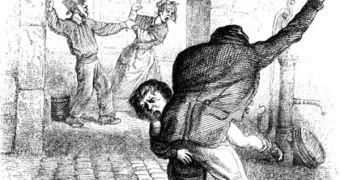Healthcare experts often have a hard time identifying a person's history of abuse, and they are, at times, faced with people, mostly women, who cover up for their attackers out of fear of retribution. Because doctors are human, they can be deceived by these victims, despite their best intentions. But a new computer model, devised by Children's Hospital Boston and Harvard Medical School expert Ben Reis, can accurately identify abuse by looking for several parameters in a person's medical record.
According to its creators, the new system could potentially save lives, by acting like an early warning system. It could indicate people that are most at risk of becoming victims of domestic violence, which could alert authorities in taking preemptive measures. The scientists say that the computer can accurately pinpoint would-be victims months, and even years, ahead of time, giving those within their right ample opportunities to intervene, NewScientist reports.
“You are potentially able to detect high abuse risk years ahead of time: you don't wait for a very bad thing to happen,” Reis explains. Official statistics indicate that as much as 16 percent of the US population falls victim to domestic abuse at some point in its life, but that the number of those who step forward and report their experiences is much smaller. In some extreme cases, the victims and their partners even go to different hospitals on different occasions, so as to avoid drawing attention to the bruising patterns, doctors say.
Most often, both the victim and the aggressor show up together, and provide “alternative” explanations for what happened. The most common excuse is that the victim accidentally “fell” and hurt themselves on the floor. Without someone making a complaint, there is very little that nurses, doctors, and the police can do to curb this phenomenon. In the new approach, the medical records of 561,000 people from an undisclosed American state were subjected to automated scrutiny. “Unsupervised, you tell us, computer: what are the risk factors? What are the things highly associated with future diagnosis of abuse?” Reis says of his approach.
The algorithm, detailed in a recent issue of the British Medical Journal (BMJ), proved extremely efficient at detecting the 19,000 people that were known to have suffered from domestic violence in the batch, but also highlighted other names, of which the researchers had no clues.

 14 DAY TRIAL //
14 DAY TRIAL //